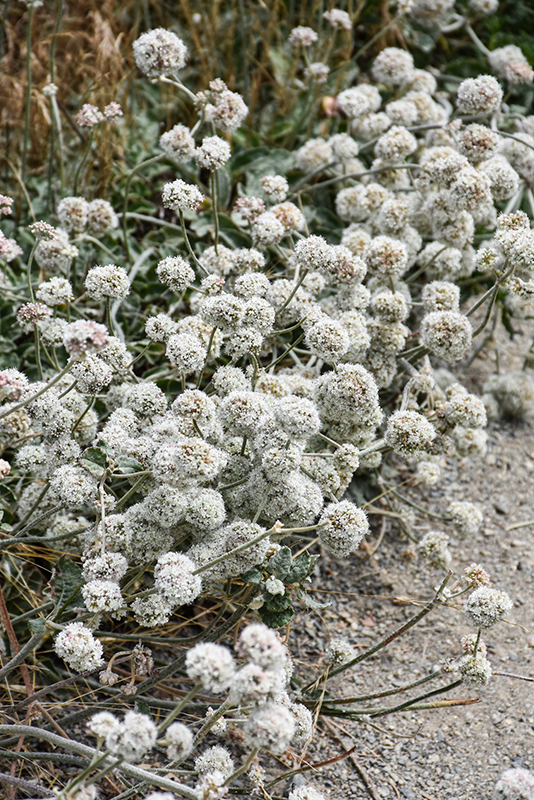Santa Cruz Island Buckwheat Eriogonum arborescens Height: 3 feet Spread: 5 feet
Sunlight:
Hardiness Zone: 9b Description: A stunning shrub for use in low maintenance landscaping or naturalizing; round, cream flower clusters rise above the gray-green foliage in late spring; blooms mature to a cinnamon or rust color by fall; excellent for naturalizing Ornamental Features Santa Cruz Island Buckwheat features showy balls of creamy white flowers rising above the foliage from early summer to mid fall. The flowers are excellent for cutting. It has grayish green foliage with white undersides and tinges of silver. The fuzzy narrow leaves remain grayish green throughout the winter. Landscape Attributes Santa Cruz Island Buckwheat is a multi-stemmed evergreen shrub with a mounded form. Its average texture blends into the landscape, but can be balanced by one or two finer or coarser trees or shrubs for an effective composition. This is a relatively low maintenance shrub, and usually looks its best without pruning, although it will tolerate pruning. It is a good choice for attracting birds, bees and butterflies to your yard, but is not particularly attractive to deer who tend to leave it alone in favor of tastier treats. It has no significant negative characteristics. Santa Cruz Island Buckwheat is recommended for the following landscape applications; Planting & Growing Santa Cruz Island Buckwheat will grow to be about 3 feet tall at maturity, with a spread of 5 feet. It has a low canopy with a typical clearance of 1 foot from the ground. It grows at a medium rate, and under ideal conditions can be expected to live for 40 years or more. This shrub does best in full sun to partial shade. It prefers dry to average moisture levels with very well-drained soil, and will often die in standing water. It is considered to be drought-tolerant, and thus makes an ideal choice for a low-water garden or xeriscape application. This plant does not require much in the way of fertilizing once established. It is not particular as to soil pH, but grows best in poor soils, and is able to handle environmental salt. It is highly tolerant of urban pollution and will even thrive in inner city environments. This species is native to parts of North America.![]()
![]()
![]()
![]()
![]()
![]()
![]()
![]()
![]()
![]()
![]()
![]()
![]()
![]()
Plant Finder
Characteristics
Applications
Features & Attributes

